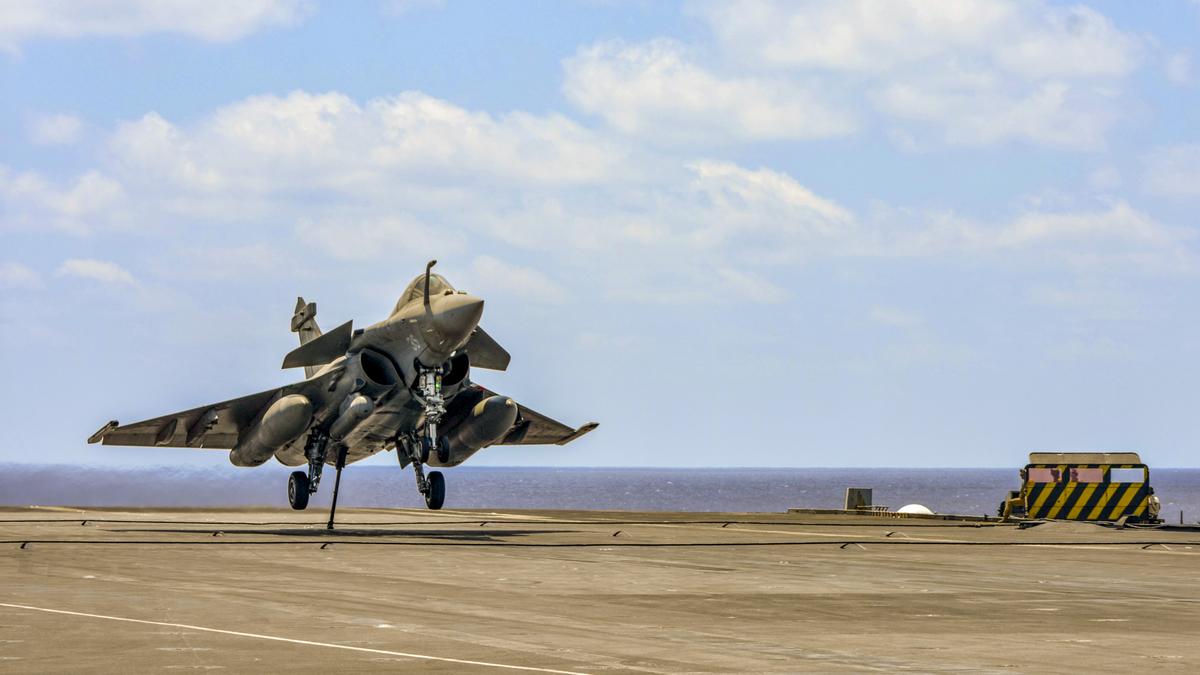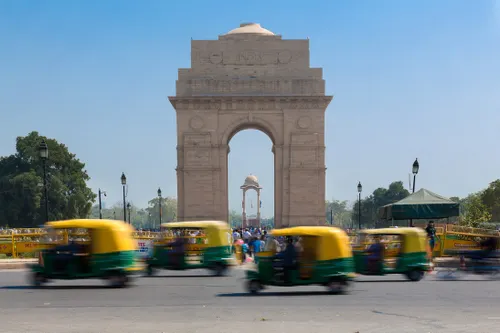
A Rafale-M jet. File.
| Photo Credit: Dinakar Peri
The Rafale-M fighter jets, 26 of which were contracted last week, once inducted from the second quarter of 2028 onwards, will enable the Indian Navy to field both its aircraft carriers with the full complement of their fighters. However, the jet as well as the flight deck of the carrier would need slight modifications for the Rafale-M to be able to fit on the lifts and for optimal performance.
“The lifts would need some modifications for the Rafale-M to fit in and as the Indian carriers use a ski-jump, the overall system would also need some changes,” a source said.
On the aircraft, the wing pylons of Rafale need to be taken off, which takes a few minutes, before they can be moved on the lift, another source said. The lifts on board a carrier are used to move the jets and equipment between the hanger below and the flight deck above.
The consolidation of the capital allocation in the defence budget done two years back, doing away with service-specific capital allocation, also came handy in prioritising the payments for the Rafale deal, that was earlier planned to be concluded in the previous fiscal.
The delivery of these aircraft would begin in the second quarter of 2028 and be completed by the end of 2030, with the crew undergoing training in France and India.
Inter-governmental deal
On April 28, India and France concluded an Inter-Governmental Agreement for the procurement of 26 Rafale-Marine jets – 22 single-seater and four twin-seater — for the Indian Navy. The agreement includes training, simulator, associated equipment, weapons and performance-based logistics (PBL) for five years costing nearly ₹64,000 crore. The cost of the deal was not officially mentioned. The deal also includes additional equipment for the existing 36 Rafale fleet of the Indian Air Force, which, officials said, includes some support and maintenance equipment. Rafale-M would be capable of operating from both the carriers – INS Vikramaditya and INS Vikrant.
The country’s first indigenous carrier INS Vikrant, measuring 262 metres long and 62 metres wide, can operate an air wing of 30 aircraft comprising MiG-29K fighter jets and, in the future, Rafale-Ms, Kamov-31 early warning helicopters, MH-60R multi-role helicopters and indigenous Advanced Light Helicopters (ALH). Both the carriers use the STOBAR (short take-off but arrested recovery) method to launch and recover aircraft for which it is equipped with a ski- jump to launch aircraft, and three ‘arrester wires’ for their recovery.
The Navy and Defence Ministry were keen to conclude the deal in the 2024-25 financial year. Funds were earmarked in the capital budget. However, as the deal got delayed it would have meant that unspent money would be returned to the Finance Ministry.
Capital utilisation
To avoid that and to optimise the capital utilisation, the Union government cleared and concluded another mega-deal that was in the pipeline but was to be concluded early fiscal year 2025-26: the deal for 156 Light Combat Helicopters (LCH) with Hindustan Aeronautics Limited (HAL) at a cost of ₹62,700 deal was advanced and concluded on March 28, 2025. “The doing away of the service-specific capital allocation has been beneficial in better managing the procurement cycles,” one of the sources cited above observed.
The Rafale is a multi-role aircraft capable of undertaking air defence, escort, maritime strike, strike against shore targets, reconnaissance and buddy refuelling missions. The Navy had procured 45 MIG-29K jets from Russia along with INS Vikramaditya. Around 40 jets are available now but their serviceability rates have been not been up to the mark, which leaves a gap in fighter strength in case both carriers are deployed simultaneously.
In the case of the IAF Rafales, the contract had stipulated that its manufacturer Dassault Aviation be part of the performance-based logistics to ensure 75% availability rate of the fleet.
The Indian Navy aircraft carriers with its full complement of fighter aircraft have the ability to exercise sea control and strike enemy units at extended ranges while remaining well outside enemy weapon ranges, a Navy source observed, adding “The Rafale will also effectively provide the Navy with an ability to effect operations on land through shore strikes.”
Published – May 03, 2025 10:25 pm IST
Anurag Dhole is a seasoned journalist and content writer with a passion for delivering timely, accurate, and engaging stories. With over 8 years of experience in digital media, she covers a wide range of topics—from breaking news and politics to business insights and cultural trends. Jane's writing style blends clarity with depth, aiming to inform and inspire readers in a fast-paced media landscape. When she’s not chasing stories, she’s likely reading investigative features or exploring local cafés for her next writing spot.






